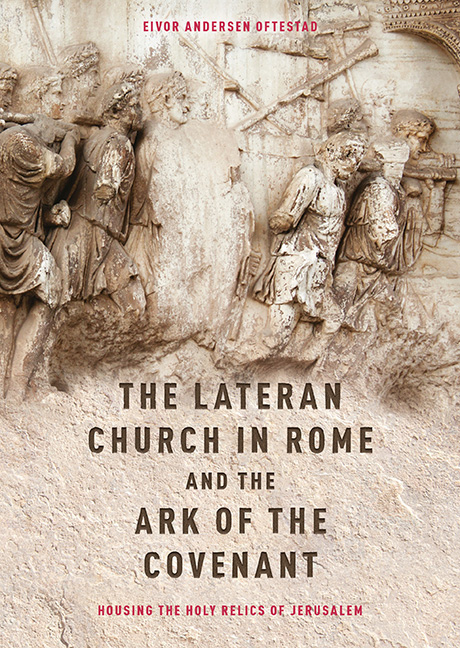 The Lateran Church in Rome and the Ark of the Covenant: Housing the Holy Relics of Jerusalem
The Lateran Church in Rome and the Ark of the Covenant: Housing the Holy Relics of Jerusalem Book contents
- Frontmatter
- Dedication
- Contents
- List of Tables
- Acknowledgements
- List of Abbreviations
- Author's Note
- Prologue
- 1 Introduction
- 2 The Description of the Lateran Church
- 3 In the Roman Context
- 4 In the Northern French Context
- 5 In the Jerusalem Context
- 6 The Temple of the New Covenant
- 7 Nikolaus Maniacutius and John the Deacon
- Epilogue
- Appendix 1 Manuscripts Transmitting the Descriptio Lateranensis Ecclesiae
- Appendix 2 Different Versions of the Descriptio Lateranensis Ecclesiae
- Appendix 3 Edition and Translation of the Descriptio Lateranensis Ecclesiae (Reg. lat. 712)
- Bibliography
- Index
- Other volumes in Studies in the History of Medieval Religion
- Frontmatter
- Dedication
- Contents
- List of Tables
- Acknowledgements
- List of Abbreviations
- Author's Note
- Prologue
- 1 Introduction
- 2 The Description of the Lateran Church
- 3 In the Roman Context
- 4 In the Northern French Context
- 5 In the Jerusalem Context
- 6 The Temple of the New Covenant
- 7 Nikolaus Maniacutius and John the Deacon
- Epilogue
- Appendix 1 Manuscripts Transmitting the Descriptio Lateranensis Ecclesiae
- Appendix 2 Different Versions of the Descriptio Lateranensis Ecclesiae
- Appendix 3 Edition and Translation of the Descriptio Lateranensis Ecclesiae (Reg. lat. 712)
- Bibliography
- Index
- Other volumes in Studies in the History of Medieval Religion
Summary
And they shall make an ark of shittim wood: two cubits and a half shall be the length thereof, and a cubit and a half the breadth thereof, and a cubit and a half the height thereof. And thou shalt overlay it with pure gold, within and without shalt thou overlay it, and shalt make upon it a crown of gold round about.
In May 1745, after his pastoral visit to San Giovanni in Laterano (St John Lateran) in Rome, Pope Benedict XIV ordered the removal of three objects that had been displayed for veneration in the church for centuries: the so-called Ark of the Covenant, the rod of Moses and the rod of Aaron. The pope had observed the special objects on display in a chapel in the ambulatory alongside the table of the Last Supper. The Ark, a decorated wooden chest covered with a cloth of silk, was placed above a glass box through which the rods were visible. Votive lamps in front of the objects designated their sacredness.
When Pope Benedict XIV stood before the Ark, he was in the presence of an age-old tradition at the Lateran. The first mention of the Ark in the Lateran basilica occurred in a tract from around 1100, later known as the Descriptio Lateranensis Ecclesiae (Description of the Lateran Church (hereafter Descriptio)). This text stated that the high altar of the basilica covered the Ark of the Covenant and included the rods of Aaron and Moses, the seven-branch candelabra, the tablet of the testament and a number of relics from the lives of Christ and the apostles. What had happened between this description of the hidden treasure in the twelfth century and the display in the ambulatory during Pope Benedict's visit in the eighteenth century?
In 1308 the high altar had been opened during a fire at the Lateran. The clerics strove to rescue the treasures inside the altar. According to the reports they found and saved an ampoule of Christ's blood, objects from his life and the Ark, apart from the old wooden altar which, according to tradition, originated from the first pope, St Peter. The recordings of the fire did not mention the rods of Aaron and Moses; however, they reappeared later.
- Type
- Chapter
- Information
- The Lateran Church in Rome and the Ark of the Covenant: Housing the Holy Relics of JerusalemWith an Edition and Translation of the Descriptio Lateranensis Ecclesiae (Bav Reg. Lat. 712), pp. xiii - xviPublisher: Boydell & BrewerPrint publication year: 2019
